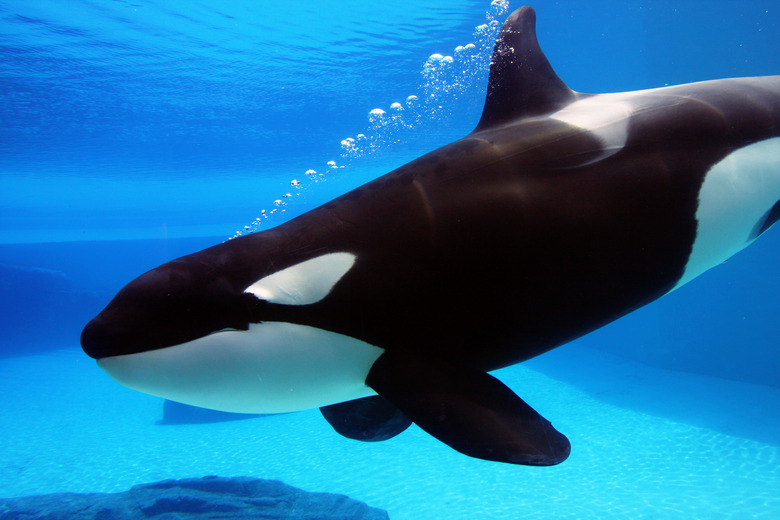Importance Of Diffusion In Organisms
Diffusion is an essential function in living organisms. Diffusion is the random but directional movement of molecules from a place of high concentration to a place of low concentration. This simple concept describes the process by which cells exchange toxic gases for life-sustaining gases. It also describes how nerve cells are able to send electrical signals to each other cells. Diffusion tells embryonic cells where to crawl and when they have arrived. Diffusion also makes it possible to reduce the loss of body heat to the surrounding environment.
Gas Exchange
Gas Exchange
The lungs have tiny empty grape-like sacs that are the hub of gas exchange. The cells of the body are constantly making energy molecules to sustain their daily activities. Not only does this process, called cellular respiration, require oxygen gas in order to work, it produces carbon dioxide gas, which is toxic to cells. The carbon dioxide produced by cells throughout the body is carried in the blood to the lungs. In the lungs, the carbon dioxide diffuses out of the blood and into the grape-like sacs. Oxygen gas that was breathed into the lungs goes in the opposite direction. Oxygen enters the blood. This vital exchange of gases happens by diffusion across thin layers of cells in the blood vessels that surround the grape-like sacs.
Nerve Impulses
Nerve Impulses
Nerve cells called neurons communicate with other cells by sending electrical signals along their cell membrane. At rest, the inside of the neuron's membrane is negatively charged, while the outside is positively charged. An electrical signal is generated when the membrane lets ions from outside flow into the cell. This inflow changes the charge on the inside of the membrane from negative to positive. This switch in charge is an electrical signal that moves down the length of a neuron's arm. The movement of ions that generates the electricity is diffusion.
Morphogen Gradients
Morphogen Gradients
Embryonic development is the process in which organs, limbs and wings begin developing. The process in which an embryo changes shape to start looking like an miniature adult is possible because of diffusion. Different groups of cells in different parts of the embryo release proteins called morphogens. Morphogens are like perfume, attracting cells from far away to move closer. Embryonic development is a beautiful symphony of many morphogen gradients overlapping and competing with each other. The result is that legs only develop on the body, antennas only develop in the head, and wings develop on an animal's back. Morphogen gradients are possible because proteins diffuse.
Counter Current Heat Exchange
Counter Current Heat Exchange
Homeotherms are animals that regulate their body temperature internally, as opposed to having to bathe in or run from the sun. One problem homeotherms face is the loss of heat to cold surroundings. Killer whales are an example of animals that face this problem, since they swim in cold water. The flippers and fins of killer whales are thin and lose a lot of heat to the surrounding water. Since flippers and fins are part of the whale, blood must carry oxygen and heat from the center of the body to these appendages. One way that killer whales preserve heat is that their arteries that bring warm blood to their appendages are right next to veins that bring blood back to the body. Thus, the heat that is lost from the arteries moving towards the tip of a fin is picked up by blood that is in the veins, moving back into the body.
Cite This Article
MLA
Ph.D., David H. Nguyen,. "Importance Of Diffusion In Organisms" sciencing.com, https://www.sciencing.com/importance-diffusion-organisms-20189/. 26 April 2018.
APA
Ph.D., David H. Nguyen,. (2018, April 26). Importance Of Diffusion In Organisms. sciencing.com. Retrieved from https://www.sciencing.com/importance-diffusion-organisms-20189/
Chicago
Ph.D., David H. Nguyen,. Importance Of Diffusion In Organisms last modified March 24, 2022. https://www.sciencing.com/importance-diffusion-organisms-20189/
